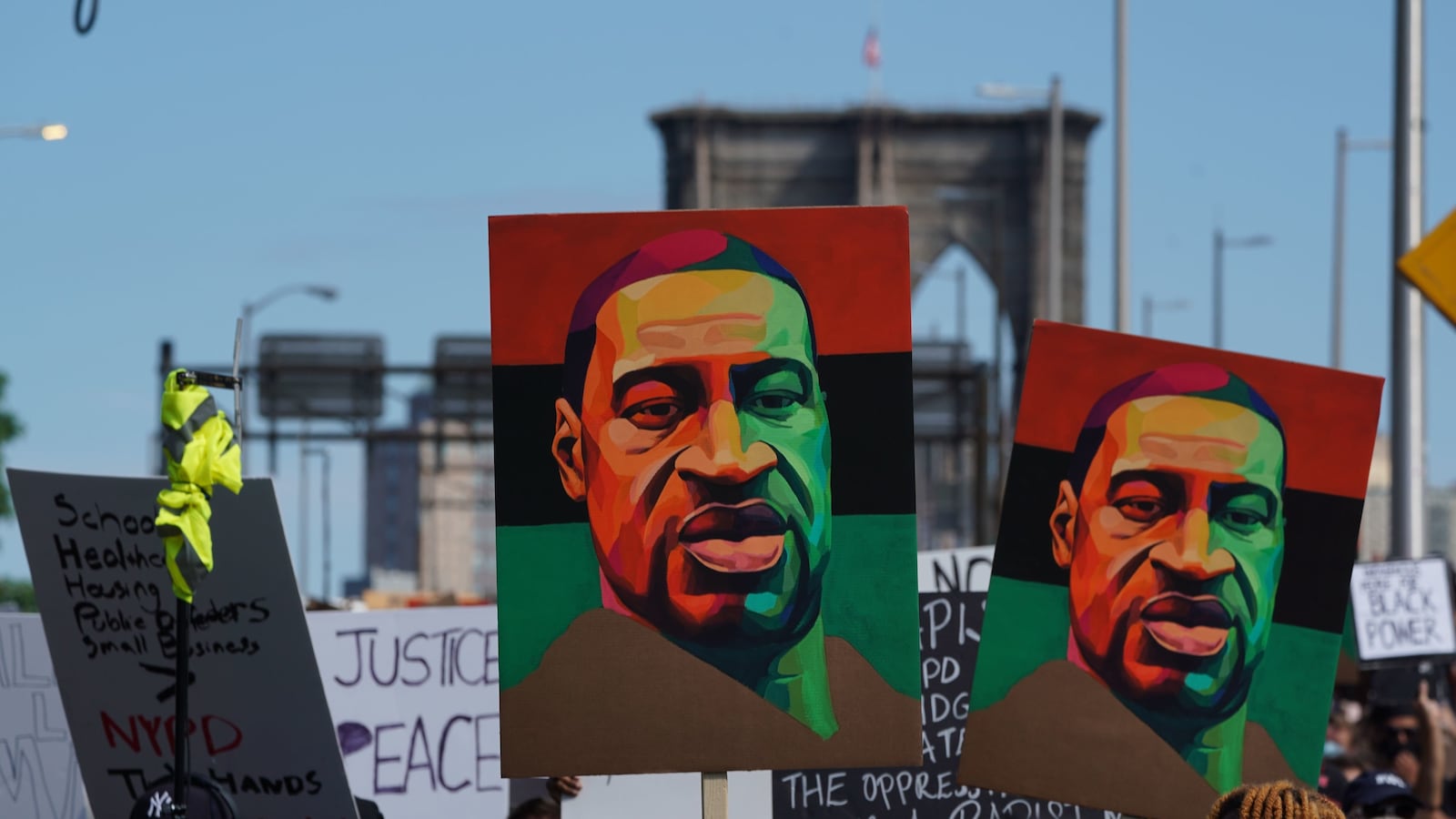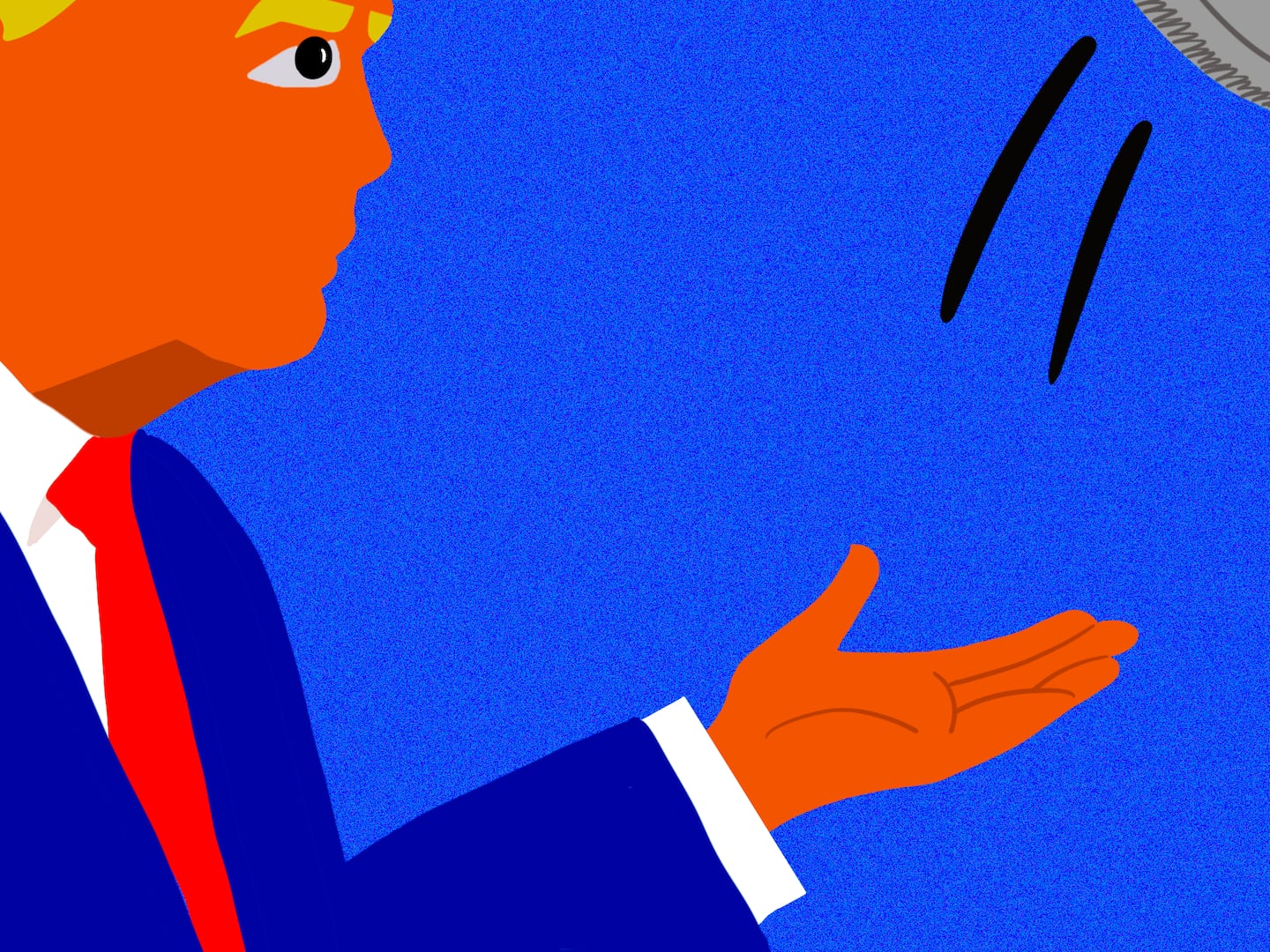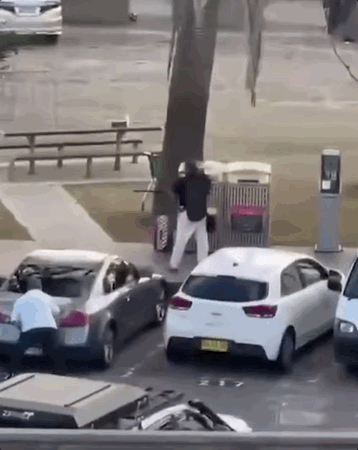The NYPD embedded at least one undercover informant among protesters demonstrating against police violence in the wake of George Floyd’s death, a newly unsealed court filing reveals.
The disclosure was buried in an FBI affidavit in the case of Jeremy Trapp, 24, who was arrested by the NYPD on July 17, after he allegedly attempted to cut the brake lines on an NYPD van parked in Brooklyn. Unnamed police sources told the New York Daily News at the time that Trapp was part of Occupy City Hall, a group calling for the NYPD to be defunded.
At the time of Trapp’s arrest, authorities said only that cops apprehended him as he emerged from underneath a marked police van. But the affidavit unsealed in Brooklyn federal court this week shows that Trapp had in fact been the subject of a days-long surveillance operation, initiated by a confidential informant being paid by the NYPD.
The filing sheds new light on the often controversial tactics that police are using to monitor protests organized after the May 25 killing of Floyd, an unarmed Black man, by a Minneapolis cop.
An analysis by the Brennan Center for Justice at the NYU School of Law found “solid evidence” that departments have infiltrated the nationwide demonstrations—something it says can only serve to further harm the already-damaged relationship between the police and the citizenry. In North Dakota, an officer posed as a protester while taking pictures of activists and yelling, “Fuck the police.” In New Jersey, undercover cops dressed up as Hasidic Jews to observe a rally against racism and police brutality. And in Texas, plainclothes officers have been circulating at protests “to identify criminals.” Protesters have been mostly peaceful, with white supremacists and “opportunists” being largely blamed for any violence that has erupted.
Michael German, a former FBI agent who is now a fellow with the Brennan Center’s Liberty & National Security Program, where he focuses on privacy and civil liberties issues, sees the use of police informants at protests as “a suppressive act that violates the free exercise of rights guaranteed by the First Amendment.”
“People coming out to express grievances against the government shouldn't have to worry that a government agent pretending to be their ally is actually a spy,” German told The Daily Beast.
On July 13, Trapp attended a demonstration outside the Brooklyn Criminal Court building, says the affidavit. There, he met “an individual who was a confidential source for the NYPD,” describing the source as a “paid informant.” Trapp allegedly told the informant that he wished to “harm police officers and their supporters” and that he “wanted to cut the brake lines on police cars.”
“Trapp and the [informant] exchanged telephone numbers so that they could contact each other in the future,” according to the affidavit.

Police say Jeremy Trapp crawled under a police van with the intention of cutting the brake line.
U.S. District Court for the Eastern District of New YorkThe two stayed in touch, and arranged to meet up again the night of July 15. The informant drove to Trapp’s home in Brooklyn and picked him up, recording their conversation as they drove around. During the next few hours, Trapp allegedly told the informant that he wanted to burn down the Verrazzano-Narrows bridge, which connects Staten Island to Brooklyn, so that “white supremacists” wouldn’t be able to get to Brooklyn.
During the ride, which extended into the wee hours of the morning, Trapp “reiterated to the [informant] that he wanted to harm police officers,” according to the feds, and that the best way to do this would be to “cut their brakes off.” After searching for an unattended police car but coming up empty, the informant drove Trapp home. They talked about meeting up later at a protest that was happening in Bay Ridge. However, Trapp said he saw the demonstrations as “too non-violent,” and that they “were not accomplishing anything,” according to the affidavit. Instead, Trapp decided to “cut the brake lines on police cars,” it says.
The next day, the confidential informant once again picked up Trapp in his car. NYPD officers tailed the vehicle, as the informant recorded their conversation with Trapp. According to the affidavit, Trapp showed the informant his backpack, which reportedly contained a “scissor-like tool that could be used to sever a vehicle’s brake lines.”
The surveillance team watched as Trapp and the informant approached a marked NYPD van parked in the Sunset Park area of Brooklyn. The informant stood nearby, pretending to be Trapp’s “lookout,” while Trapp crawled underneath the vehicle in an alleged attempt to disable the brakes. It was all captured on video by both the surveillance team and the informant.

A photo of the damage Jeremy Trapp allegedly did to an NYPD vehicle.
U.S. District Court for the Eastern District of New YorkTrapp, still unaware that he was on the wrong side of a sting operation, got back into the informant’s car and “expressed excitement...about having severed the brake line on the NYPD Van and stated that he wanted to do the same to more police cars,” says the affidavit. They never did. Instead, Trapp and the informant met up with a group of protesters at City Hall, then drove home to Brooklyn. The police kept the car in their sights, arresting Trapp shortly after arriving back in the borough.
As it turns out, Trapp cut the wrong wire underneath the NYPD van. Rather than sabotaging the brake line, he mistakenly damaged a wheel speed sensor line that looked similar.
The NYPD referred a request for comment to the federal prosecutors in Brooklyn, who did not immediately respond.
New York City police reform activist Robert Gangi, who ran for mayor in 2017, has mixed feelings about the case.
“On one hand, I’m not pleased that they’ve had undercover informants at protests,” Gangi told The Daily Beast. “But I’m pleased that they caught this guy. If the case that they present is true, they stopped a potentially terrible thing from happening.”
However, German of the Brennan Center finds certain details in the affidavit to be highly problematic, noting that there is a long history of informants acting “not as listening posts but as agents provocateur, which is particularly problematic when agents are sent into groups protesting police abuse.”
Federal agents are under great pressure from the White House and the attorney general to bring protest-related indictments, German added, “which shouldn't be a reason to spend resources intended to address serious federal crimes to manufacture a violation that could have been more effectively handled at the local level.”
Trapp is now facing federal charges of “destroying a motor vehicle” with a “reckless disregard for human life.” He does not yet have a lawyer listed in court filings.








